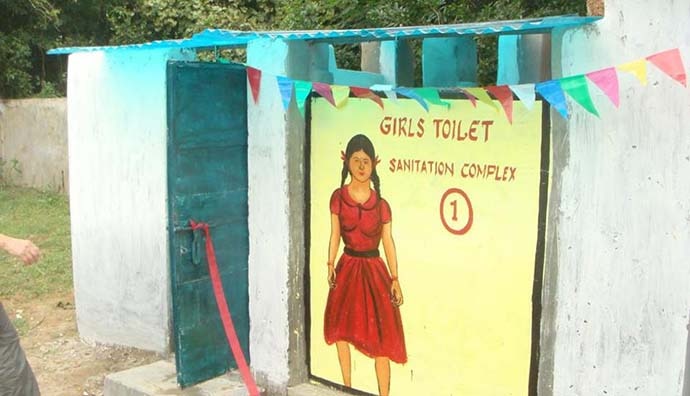How to make Bharat swachh? Brush manual scavengers under the carpet

Technically and ideally, Swachh Bharat can’t go hand in hand with the practice of manual scavenging
The easiest way to solve a problem is to sweep it under the carpet and forget that it exists. That’s how our governments, both at the Centre and in states, are going about manual scavenging, an illegal practice, and a non-bailable offence in India. Whenever the issue comes up for discussion, voluminous reports of how the practice is near-extinct, with the government aid of rehabilitation package, are quoted to cover up the blatant truth that the inhuman practice still exists.
This state of denial helps the BJP-led government, which, in 2014, had set the target of eradicating the practice by 2019 under its Swachh Bharat Abhiyan.
Only a year away from the target, while governments must be rejoicing how they are on the right track, here is how reality stinks.

Numbers won’t lie. So, do away with the numbers
According to a report in Hindustan Times, a pilot survey to identify manual scavengers in 18 states has missed its deadline of April 30. It has been found that the states do not want to acknowledge that they haven't dealt with the issue effectively. Some states also claim to have been busy with election works.
That manual scavenging is still a profession for many of India's most marginalised creates a ripple when deaths — either caused by toxic fumes, or by accident — of the sewers are reported. With zero conviction, the cases pass into oblivion.
In January 2018, three workers suffocated to death while clearing a manhole in HSR Layout, Bangalore.
The same month, three contract workers died in Mumbai as they fell nine metres down a manhole.
In February this year, deaths of seven workers were reported from Chittoor, Andra Pradesh when they were made to clean a septic tank at a private hatchery.
These deaths, including the huge number of deaths reported in Delhi last year, do not make their way into any government record, because, on paper, the practice ceased to exist in 2013.

Confusion over who are manual scavengers
The Employment of Manual Scavengers and Construction of Dry Latrines (Prohibition) Act, 1993 defines a manual scavenger as “a person engaged in or employed for manually carrying human excreta”.
The definition was reviewed in 2013 and today, "manual scavenger" stands for a “person engaged or employed, at the commencement of this Act or at any time thereafter, by an individual or a local authority or an agency or a contractor, for manually cleaning, carrying, disposing of, or otherwise handlng in any manner, human excreta in an insanitary latrine or in an open drain or pit into which the human excreta from the insanitary latrines is disposed of, or on a railway track or in such other spaces or premises, as the Central Government or a state government may notify, before the excreta fully decomposes in such manner as may be prescribed…"
However, there is confusion. Cleaning night soil and pit latrines falls under manual scavenging, while the activists of the Safai Karmachari Andolan, an NGO, claim that governments do not consider sanitation workers cleaning septic tanks and sewer lines "manual scavengers".

How the practice came to an end 'officially'
The Centre has claimed that it has provided 91 per cent manual scavengers with a one-time cash payment of Rs 40,000. It also claimed to have initiated skill development programmes for families that were previously dependent on manual scavenging as a livelihood.
Also, there were reports of district magistrates filing “false” affidavits claiming zero existence of manual scavenging.
Another trick helped the governments to end the practice. Civic authorities have outsourced the work to private firms, who, in turn, hire sanitation workers who do exactly the same work as the manual scavengers.
But they are not manual scavengers.

Hand in hand: Swachh Bharat and manual scavenging
Technically and ideally, Swachh Bharat can’t go hand in hand with the practice of manual scavenging. It has become synonymous with keeping one’s house clean while dumping litter on the streets.
In reality, new toilets and manual scavenging have co-existed because most of them do not have water supply.
The deadline, if it exists, to eradicate manual scavenging ends in 2019. Burying their heads in sand is the best governments can do!

